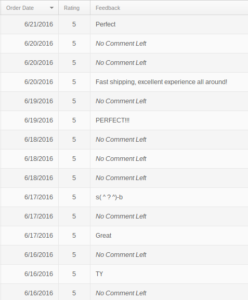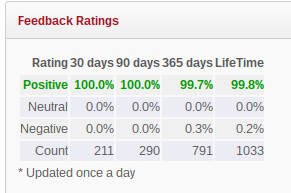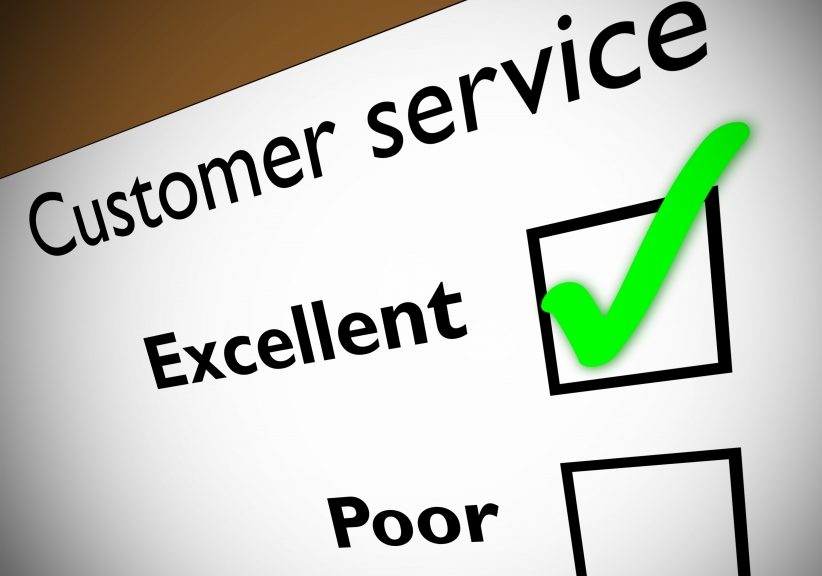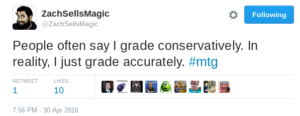Written By:
Douglas Johnson @Rose0fthorns
__________________________________________________
Let’s say for the sake of argument that you’re new to the whole financial side of Magic. You’ve traded a bit at your local store, you’ve overheard discussions about how X card is worth X price now, and you’ve bought cards on TCGplayer or SCG before. Now you want to become financially savvy, and make the most out of how to sell your cards at their peaks while buying cards at their lows. There’s a whole pile of articles out there to help you do that. One of the more recently published comprehensive guides to selling a card was written by our own Travis Allen, and is a great place to start.
Unfortunately, the card you sold doesn’t just magically disappear and transform into those crisp dollar bills we all know and love. It’s not like all of your cards are double-faced, where the other side holds real (your country here) currency. You have to ship the card to another human being (or store, but for the sake of this article we’re assuming that you will be selling to other people). A person that has hopes, dreams, and emotions. Just like you.
Instead of focusing on bulk today, I’m going to try and go over one of the oft-forgotten aspects of this whole #MTGFINANCE thing; customer service. We’re going to look at some common mishaps and situations that sometimes occur when a buyer purchases a card from a seller, and then talk about some solutions and practices that each party can remember to help approach a resolution. I’ve been on both sides of these situations, and can understand how frustrating it can be.
Situation 1: Cards Lost in the Mail
This is one of the more common things that will cause a buyer and seller to interact with each other when working through a platform like TCGplayer, eBay, or Pucatrade. These websites generally allow the seller 6-8 business days before the buyer can take action, to account for sometimes slow service by the USPS. Sometimes time passes, and the card still hasn’t shown up. So what do you do as a buyer? What do you do as a seller?
You might already be thinking that almost every situation where this has happened can be preemptively solved by shipping with tracking, and you’re not wrong. Shipping securely in a bubble mailer with a PayPal shipping label for $2.45 is a (relatively) cheap way to increase the probability that the package will reach its’ destination. Unfortunately, that’s not always economically viable for either party. If I buy an Overgrown Tomb from a local player at $4 and then ship it to someone over Facebook for $7, there’s literally zero point in me putting tracking on that card alone unless I pass those shipping costs onto the buyer. In that case, the buyer will gladly purchase the shockland from some other venue where he/she can avoid paying close to 30% more.
My personal rule is that I provide free tracked shipping for any order totaling $25 or more. My margins are safe enough at that point to make it worth tracking, and it encourages the buyer to purchase more cards to hit that number. For orders totaling $24 and under, I ship in a PWE (Plain white envelope) with a stamp. There are a bunch of other articles out there on how to ship a Magic card safely and securely, so we won’t spend anymore time on that here.
As a Buyer
If you’re purchasing cards from TCGplayer or eBay, remember that the expectation is on the seller to get you those cards in that 6-8 business day window. If you order cards on a Saturday and they’re shipped out Monday morning, it’s not the fault of the buyer if those cards don’t arrive in time for your Friday Night Magic (unless you specifically agreed to and paid extra for expedited shipping, but TCGplayer doesn’t allow this). Give yourself that window of at least a week and a half for the cards to arrive, or be ready to pay the extra shipping cost.
Okay, so now it’s been 9 business days and your Grafdigger’s Cage that was shipped in a PWE still didn’t come in the mail. You’re not happy. I get that. However, it’s not exactly going to reflect well on you if you use the TCGplayer/eBay/Puca messaging system to immediately berate the buyer and demand a refund, or by leaving scathing feedback. Our USPS system is far from perfect, and sometimes stuff gets lost. This is the part where you politely message the seller, and let them know about the situation. Your card(s) didn’t show up, and you waited the appropriate amount of time. If the seller knows what they’re doing and takes the actions that I’ve detailed in the next few paragraphs, they’ll make it right with you because they don’t want to lose your trust (and your future dollars) as a seller.
As a Seller
We all dread this email (or Twitter/Facebook) message. Some variant of “My cards still haven’t shown up yet..” While the dollar value isn’t going to be too high if you’re using tracked for high-end orders, it’s still annoying to think that you might have put the wrong address on the PWE when mailing out those orders. So what do you do?
First of all, don’t accuse the buyer of stealing or lying. That’s not going to get you anywhere close to a positive feedback review, and it doesn’t help to resolve the situation. If you do feel like something is sketchy, I would absolutely send a report to the real customer service representatives at TCGplayer or eBay (although I highly doubt eBay will do anything to help the seller). At the very least, the platforms can keep track and see if the buyer forms a pattern of making the same claim to other sellers on a regular basis.
Secondly, don’t just immediately apologize and refund the order. This is a big mistake that I’ve heard happens a lot. Most players will still want that card instead of just their money back, because then they have to go through the process of finding another copy for the same price. If you do own another copy of that Grafdigger’s Cage, just ship it to the buyer. Double Triple check the address and name on the PWE, and take extra care to make sure that it’s being dropped off at the post office instead of just leaving it in your mailbox and risking it getting stolen.
Situation 2: Condition Disputes
This is the other common issue I’ve run into, as both a buyer and a seller (Not that I run into this often as a TCGplayer seller….). Different people are taught how to grade Magic cards differently, and those opinions can clash when one party receives a card that they believe is in a worse condition than what they ordered. Even some of the superstores like SCG, Channelfireball, and Cardkingdom have different grading scales; I’ve bought cards from SCG at “Moderately Played” and immediately sold them back to Cardkingdom where they were graded as “Slightly Played”.
As a Buyer
This might start to sound repetitive, but the first step is to contact the seller without exploding in a fit of rage. Sometimes there’s a mark on the card that was only visible in a certain light, and sometimes two cards from inventory get swapped on accident so someone gets MP and the other person gets NM. It happens, we’re all human. While not an absolute law, it’s a good rule of thumb to follow that an LP card (in place of NM) gets a 10% partial refund, MP gets 15-20%, and HP is 30-35%. It helps if you have pictures of the card that you received to help make your case, although TCGplayer doesn’t allow buyers and sellers to send images between each other so you’d have to provide email addresses or imgur links.
This is not an excuse to go around and complain to every seller you buy cards from, and think of yourself as a “super harsh grader”, which is something I’ve heard before from a buyer. There are some buyers out there who think they can get 10% off every single purchase just by claiming LP on the cards they buy, expecting a discount. This behavior is absolutely kept track of by TCGplayer and Pucatrade, and crying wolf will leave you helpless when you actually get sent a MP card when you wanted NM.
As a Seller
Grade your cards realistically before listing them. I’ve heard a lot of people say “Oh I’m a conservative grader like SCG” or “I grade dual lands differently because they’ve been around for 20 years, so this one is actually LP ‘for its age'”. No. None of that. @ZachSellsMagic summarized card grading in a single tweet that I’ve since taken and started using in my conversations with sellers who disagree with me when selling me cards. (Also, Zach is absolutely worth a follow on Twitter.)
Look at the card from multiple angles of light to see if it has any markings that are invisible from only one perspective. Water damage, scratches, and grime are all more elusive forms of wear that go unnoticed without proper grading, and it’s always better to get that customer feedback that says they expected a worse for wear card rather than the dreaded email saying that their NM card was actually LP. Grade what the card actually is, instead of what you wish it was. This is especially true for foils, where a buyer of a NM foil is much more likely to be more critical.
End Step
I spent way more words than I expected to while writing this, but I think that’s fine. If this gets a positive response, I’ll write another one next week where I go over more niche and advanced scenarios involving customer service to ensure that even strangers come back to you for repeat business. I still believe that this is a hugely under-reported aspect of this #MTGFINANCE banner that’s all the rage right now, and some people are going to get in over their heads.


On a closing note, remember that as a TCGplayer/Pucatrade/eBay salesperson, you are your own Public Relations person. SCG, CFB, CK, ABU… They all have a person specifically trained to deal with situations like the ones stated in the article. When you decide to become an independent seller, all of that burden goes to you and you only. Even if it looses you a few dollars on a transaction when you have to give back 10% to someone who you didn’t think deserved it, that customer service will make them more likely to come back to you again and again.
_____________________________________________________________________
ADVERTISEMENT: OzGuild makes organising your Magic card collection simple… Scan your cards into a digital catalogue using your smartphone, it’s fun, fast and easy. Scan in your first deck for free!


Three things:
1. People often expect tracking on cards $20 and above, so I would probably lower your $25 threshold to this amount of I were you.
2. The expected partial refund discounts are MUCH greater than your proposed percentages. For LP, the expected discount is 20%. MP should have a 40% refund, and HP, a 60 % refund. This is the guidelines that are observed by several well known stores, and Pucatrade has the above LP and MP discounts as a standard.
3. As a buyer, I would recommend recording the opening of any valuable cards using a smartphone or a camera if you have one to remove any definite doubt for any condition cases.
Overall, the article does have merit for first time buyers/sellers.
1) If someone expects a $22 card to be shipped with tracking, that person can go ahead and order from someone else next time if they get my card and are unhappy with the packaging.
2) Not sure where the % discounts you’re getting this from, but again, if they expect that, they’re freaking nuts, and can order from…. someone else next time whom they can bully around.
3) Not a bad idea, but I think a little overkill. I buy and sell a metric butt-ton (that’s a real unit of measure I’m sure) of cards, and have had zero issues getting communication with sellers, or getting TCG to step in to help resolve if they don’t respond.
1. It’s not about the packaging, but $20 cards are the most likely to be claimed falsely as “never received”, from my experience. Plus, Tcgplayer often suggests tracking for cards above this threshold and sides with the buyer if there is no tracking.
2. Look at Pucatrade’s condition page. The percentages also come from certain buylist pages and seller boards, but I do not know off the top of my head.
3. Quite a few sellers (outside Tcgplayer) who send cards in the wrong condition are too much on the defensive. This step REALLY helps for disputes on sites like deckbox.
Nice article!
Aside from being a casual trader for almost 15 years now, I am profesionally employed as Customer Experience & Service consultant. Here’s a little masterclass on customer experience:
Customers experience your products or services on 3 different levels (Forrester research):
– Meets needs (“You have fullfilled my exact needs”)
– Easy (“It was easy for me to do business with you”)
– Enjoyable (“It was enjoyable for me to do business with you”)
You can aplly these basic principles on any B2C (or in Mtg Trading C2C) transaction. They also match perfectly to your article:
– Meets needs: ship exactly what your customer ordered. Give a final check to the condition of your cards before you ship them. If on closer inspection they are not in the descibed condition; contact your buyer before shipping (with a proactive solution). Make sure you pack well.
– Easy: ship fast, communicate fast. If there is a dispute; always look for the solution, not the problem.
– Enjoyable: always keep polite, trust your customer, try to surprise your customer with a personal touch.
And most important of all; ask for feedback and act on it. If more than 2% of your customers evaluate your cards as not being in the condition described; don’t doubt or critisice them, but grade more accurate. You might lose some margin in the short run, but you will get repeat sales and loyal customers in the long run.
“Outside In”, by Manning and Bodine (Forrester Research)
for anyone interested in advanced customer service strategies and tactics.
A couple thoughts:
For shipping, if you are just looking at economics, the dollar threshold for tracking should be much higher. I personally use $30, and I’d go higher if not for customer expectations.
For condition errors, I think the percentage depends on the value of the card. Your percentages might be right for higher value stuff, but for the lower value stuff I usually buy and sell they are too low. Also, as a buyer, in many cases I’d rather have a full refund and return the card (seller should pay return shipping [assuming they want it back]). If the condition isn’t what the buyer ordered, there’s no obligation to keep it.
Just the sheer volume numbers work in your favor on the $30, or even $40 PWE items in some cases. $2 saved on 100 orders before one actually DOES disappear (actually, those numbers are probably closer to 1000+ orders). I’ve sent out nearly 2000 shipments and have lost zero. One… only one… which was sent out with tracking, was “lost”, but in all reality the guy was lying (because, get this… I called his local post office, they got his carrier on the line, and she said “oh yeah, that was a small yellow envelope, a bubble mailer, I remember putting it in there yesterday, because it barely fit in his box”). TCG took my side on that one 🙂
I will echo the idea of raising your tracking threshold. I have taken to simply never tracking unless I have to. So far this has saved me a lot of money.
One note is that tracking is different per country of origin. Shipping tracked from Canada is around $20 to the US.
I actually had eBay side with me on a selling dispute once. They claimed the buyer was “suspicious” and told me to not do anything and they would close the dispute, but I had already refunded him personally so I was screwed anyway. lol
FWIW: Face to Face games has some great buy rates on foils, although their grading is outright insane.. probably similar to that of Strikezone or potentially worse.
Sent a $600 sell order last week, they received it and graded it in a timely manner. Unfortunately my as close to mint as humanly possible order was mostly graded to SP and I was paid $530.
many of the cards were fresh pack to double sleeve unplayed, or ordered personally as NM/M.
I will not be doing business with them again, despite me wanting to support Canadian buyers. Wish I had just sent the chase foils to SCG, as they were next in line for buy %.